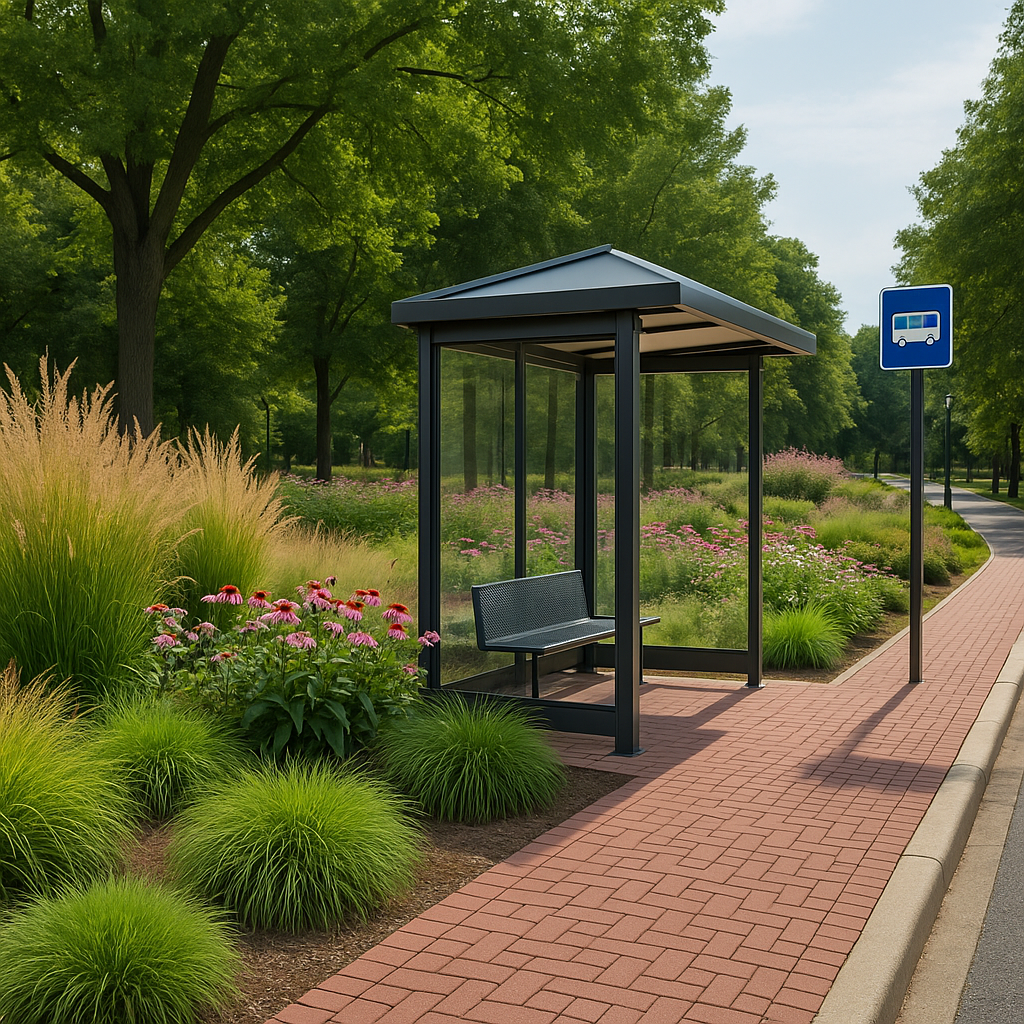Transit infrastructure, including train stations, bus terminals, and light rail corridors, is often seen as purely utilitarian. But integrating a beautiful landscape into transit projects can dramatically transform the user experience, increase ridership, improve safety, and foster community pride. Well-designed landscapes contribute not just to visual appeal but also to comfort, sustainability, and urban connectivity.
This article explores how landscape design architecture enhances transit environments. From landscape drawings to material selection and maintenance, we outline best practices that create transit spaces that are both beautiful and functional.
Why Beautiful Landscapes Matter in Transit
Improve Commuter Comfort and Wellbeing
Landscaped transit stops reduce heat, buffer noise, and offer psychological relief through natural elements. Trees, seating, and green buffers create welcoming environments.
Promote Safety and Visibility
Open, well-lit, and intentionally landscaped areas improve visibility, reduce crime, and guide pedestrian flow. Strategic planting ensures no obstructions near transit pathways.
Strengthen Civic Identity
Public transit is part of a city’s visual culture. Integrating landscape art, native plantings, and local materials reinforces place-based design.
Essential Elements of Landscape Design for Transit
Start with a Thoughtful Landscape Drawing
Every project begins with a detailed landscape drawing that considers:
- Pedestrian flow
- Plant selection
- Drainage and stormwater management
- Lighting and accessibility
- Sightlines and safety zones
Incorporate Native and Resilient Plantings
Choose species that require low maintenance and thrive in urban transit zones. This supports beautiful landscape sustainability and reduces ongoing costs.
Shade and Shelter Design
Integrate trees, pergolas, and green roofs to protect passengers from sun and rain while creating vibrant, green pockets in the city.
Permeable Surfaces and Rain Gardens
Install permeable pavers, bioswales, and rain gardens that manage runoff, reduce urban flooding, and enhance ecological function.
For more on integrating water management features, visit Beautiful Landscape in Green Infrastructure Projects.
Key Landscape Enhancements for Transit Areas
Station Entrances
Frame entrances with symmetrical trees, native shrubs, and colorful groundcover. These features soften infrastructure and guide entry.
Platform Edges and Waiting Areas
Use low-profile greenery and planters to define boundaries and offer visual relief. Include benches with shaded zones and tactile walking paths.
Pedestrian Corridors
Green medians, sidewalk buffers, and wayfinding gardens improve safety and guide pedestrian flow.
Explore pathway strategies in Beautiful Landscape Walkways for Safer Public Spaces.
Multimodal Transit Plazas
Where buses, bikes, and trains converge, landscapes unify the space. Include gathering zones, public art, informational kiosks, and greenery.
Noise and Wind Buffers
Tree rows and hedgerows reduce the impact of road noise and wind, enhancing comfort at waiting areas.
Public Space Integration and Connectivity
Many cities now design transit hubs that double as mini-parks or plazas. These spaces include:
- Amphitheater seating
- Water features
- Art installations
- Flexible green spaces for events
See real-world integration ideas in Beautiful Landscape for Parks and Public Plazas.
Sustainability and Smart Infrastructure Integration
Green Roofs and Living Walls
Green infrastructure on transit stations reduces building heat and boosts aesthetics, especially in dense urban zones.
Solar Lighting and Charging Stations
Combine sustainability with usability by integrating solar-powered lighting, charging benches, or bike docks into the landscape.
Reclaimed Materials
Use recycled concrete, salvaged timber, and reclaimed stone to reinforce environmental values in landscape elements.
Collaborating with Expert Landscape Contractors
Transit-Specific Site Analysis
Landscape contractors analyze slope, traffic volume, access points, and environmental constraints to tailor landscape designs for safety and durability.
Efficient Construction in High-Traffic Areas
Professional contractors are trained to work in tight timeframes and confined public zones, ensuring minimal disruption.
Long-Term Maintenance Planning
Green areas around transit must remain tidy, visible, and safe. Contractors develop sustainable maintenance plans and often partner with city or transit agencies for upkeep.
Final Thoughts
By integrating beautiful landscape applications into transit projects, municipalities and developers create inviting, safe, and sustainable mobility corridors. From aesthetic improvements to functional enhancements, thoughtful landscape design architecture has a profound impact on how people experience public transportation.
Through clear landscape drawings, local collaboration, and expert landscape contractors, transit environments evolve from industrial utility to vibrant, people-first spaces that reflect a community’s values and vision for the future.

